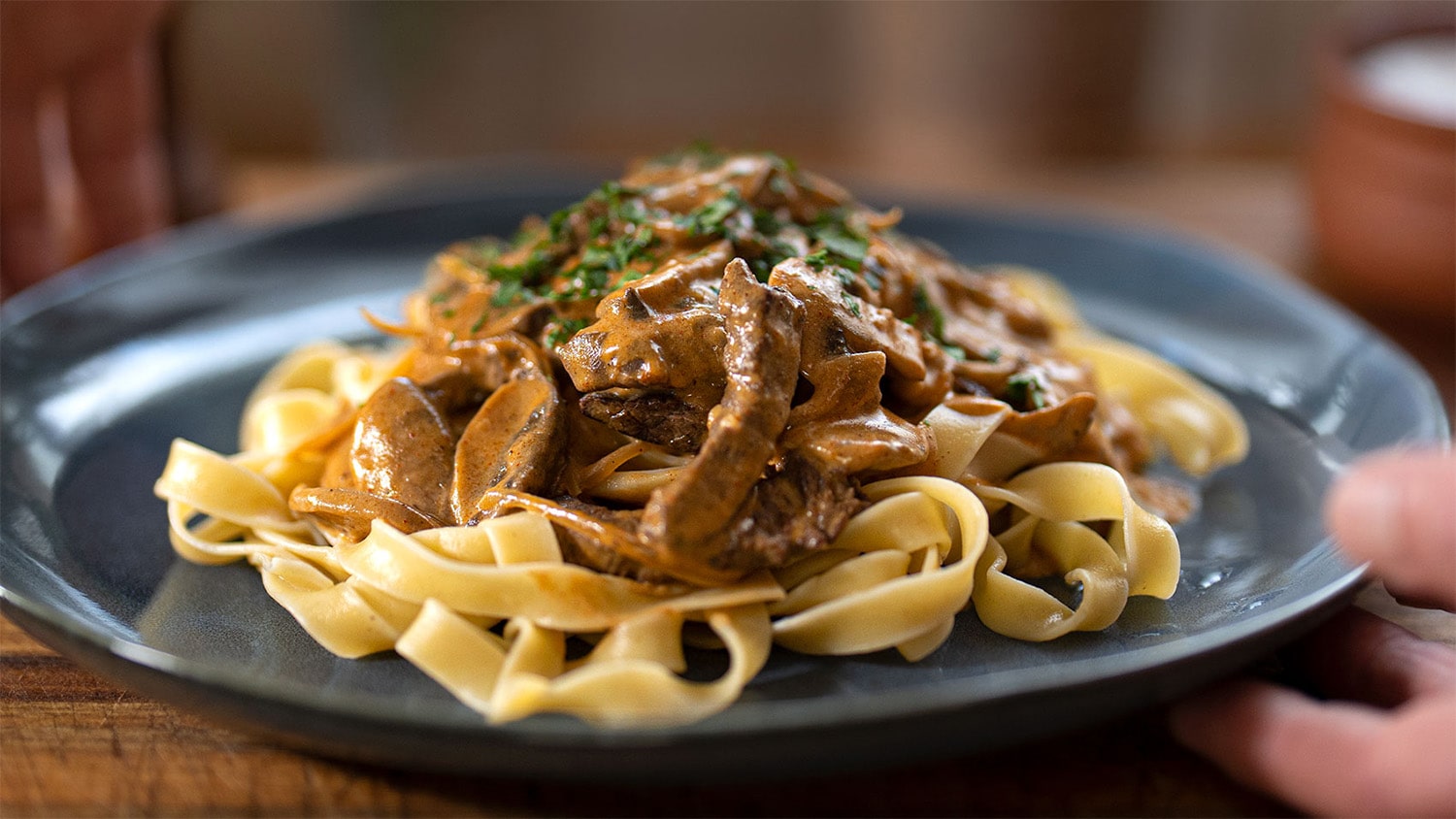
28 interesting facts about Beef stroganoff
- 👁️ 963
Beef Stroganoff, a dish that has journeyed across continents and centuries, continues to captivate the palates of food enthusiasts around the world. This culinary masterpiece, with its rich history and creamy, savory sauce, embodies a perfect blend of simplicity and sophistication. Originating from Russia, it has undergone numerous transformations, adapting to various cultures and tastes while maintaining its core identity. Let’s dive into the fascinating world of Beef Stroganoff, exploring a tapestry of facts that reveal its global journey, culinary versatility, and the timeless appeal that makes it a beloved dish across the globe.
- Beef Stroganoff originated in 19th-century Russia, reflecting the opulence of the Russian aristocracy.
- The dish is named after the Stroganov family, a notable Russian dynasty known for their wealth and influence in society.
- Traditionally, Beef Stroganoff is made with sautéed pieces of beef served in a sauce with sour cream.
- The original recipe did not include mushrooms or onions, which are common in today’s variations.
- It was first documented in a Russian cookbook in 1871, making its culinary debut in the printed world.
- Beef Stroganoff made its way to China and, subsequently, to the United States after the Russian Revolution, carried by immigrants.
- In the United States, it gained popularity in the 1950s, becoming a staple of American home cooking.
- The dish is traditionally served over rice or noodles, particularly egg noodles, in Western adaptations.
- There is a wide variety of Beef Stroganoff variations, including those that use chicken or pork instead of beef.
- The French influence on Russian cuisine is evident in the dish’s preparation and creamy sauce.
- In Brazil, Beef Stroganoff (Estrogonofe) includes tomato sauce and is often served with potato sticks.
- The dish is known for its quick preparation time, making it a favorite for weeknight dinners.
- Authentic Russian Beef Stroganoff is characterized by its use of mustard and a flour roux for the sauce base.
- Some modern recipes incorporate alcohol, such as brandy or white wine, to enhance the flavor.
- The concept of using sour cream, or smetana, in cooking is a distinctive feature of Eastern European cuisine.
- Beef Stroganoff is considered comfort food in many cultures, loved for its creamy texture and rich flavors.
- Despite its aristocratic origins, the dish has become accessible and enjoyed by people from various socio-economic backgrounds.
- It has been featured in numerous cookbooks and cooking shows, spreading its popularity further.
- There are even vegetarian versions of Beef Stroganoff, using mushrooms or tofu as substitutes for meat.
- The dish’s adaptability has led to the creation of dairy-free versions, utilizing coconut milk or cashew cream.
- Culinary competitions have seen innovative takes on Beef Stroganoff, including deconstructed versions.
- Some chefs add a touch of paprika or cayenne pepper for a spicy twist.
- The creamy sauce of Beef Stroganoff is often cited as a key component that ties the ingredients together.
- In Russia, the dish is sometimes served with a side of pickles, adding a contrasting flavor.
- Historical accounts suggest that variations of Beef Stroganoff were enjoyed by Russian soldiers in the field.
- It has been included in the menu of international space missions, showcasing its universal appeal.
- The dish reflects the fusion of different culinary traditions, symbolizing the cross-cultural exchanges of the 19th and 20th centuries.
- Beef Stroganoff continues to evolve, with chefs around the world putting their unique spin on this classic dish.
Beef Stroganoff stands as a testament to the power of culinary evolution, seamlessly blending tradition with innovation. Its journey from the aristocratic tables of Russia to the diverse kitchens of the world highlights its ability to adapt and thrive across different cultures and tastes. Whether served in its classic form or reimagined with contemporary twists, Beef Stroganoff remains a beloved dish that continues to inspire and satisfy. Its enduring popularity is a tribute to its rich history, versatility, and the delicious harmony of its flavors.











